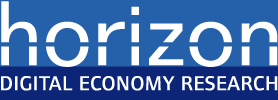
According to recent national bus surveys (e.g. Bus Passenger Survey, 2016), passenger satisfaction with value for money has been reduced compared to previous years. At the same time, reported important factors affecting journey time include congestion, roadworks, passenger boarding time and waiting long at bus stops. Furthermore, transport research in other countries suggest that community building involving passengers and transport authorities/services is critical for promoting sustainability and engagement with transport services in long term (Too & Earl, 2009).
This project aims to design, develop and evaluate a proof-of-concept mobile service for public transport users that would make their journeys more enjoyable and more interesting by linking them to related fragments of content, including local information, mini-games, and user-generated content from other travellers, through the specific seat or vehicle they are travelling in. Involving researchers from Human-Computer Interaction, Psychology, Computer Science, and Human Factors, this proof-of concept project will provide the basis for an impact case study of how technological changes can make place matter in travel, rather than the focus being on destination. It will work to enhance traveller’s enjoyment of public transport and mobility, concentrating on the (un)sociability of public travel and the challenge of connecting to the traveller.
“In My Seat” involves development of an app that supplies dynamic content to the traveller upon scanning a code embedded in their seat on the bus or other relevant travel location. Making use of existing technologies such as hashtags, time stamps, tags, and location stamps, the traveller will be able to interact with posts from previous passengers, by responding or leaving their own messages. They will also be able to access relevant information (for example bus times, current location and route, and traffic updates) and local knowledge (hints, things to do, reviews) as well as location-based mini-games (similar to geocaching for example) and other content such as fortune cookies and surveys. The exact content will be co-created with stakeholders and potential users to make the experience engaging, enjoyable, and useful.














